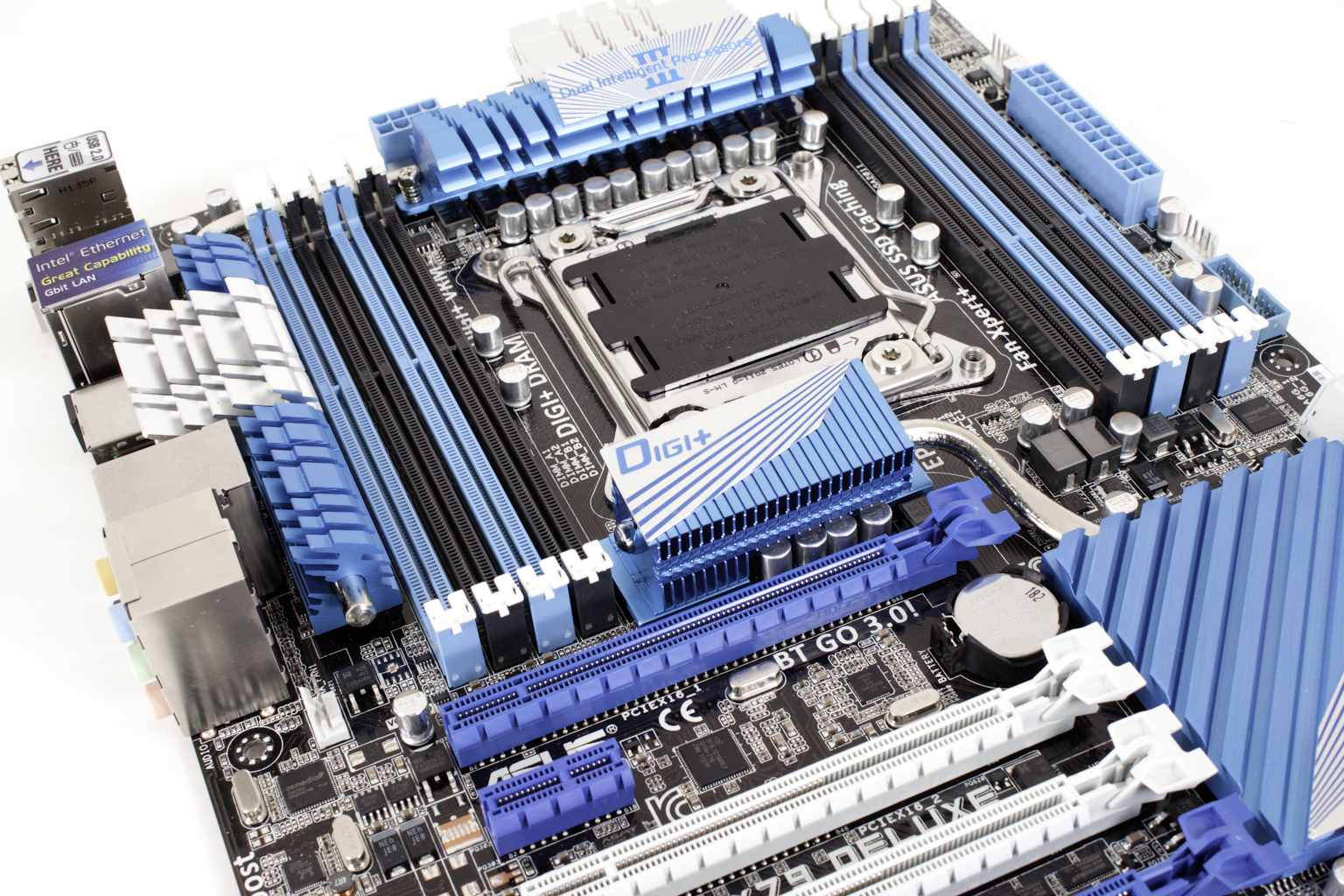The Box and Goodies -
Asus’ performance line up for the consumer has its own look. I am not sure if it is exactly a good look or not just yet. The box is black with grey dots. These dots are highlighted by a pattern (the symbol for infinity). Overtop of this we find the name of the board in large white and green letters. We also find various icons for featured items on the board, but the thing that jumps out at you is the large Digi+Power Control badge in the upper right-hand corner that and the PCI3 3.0 Ready banner which we will check out a little later.
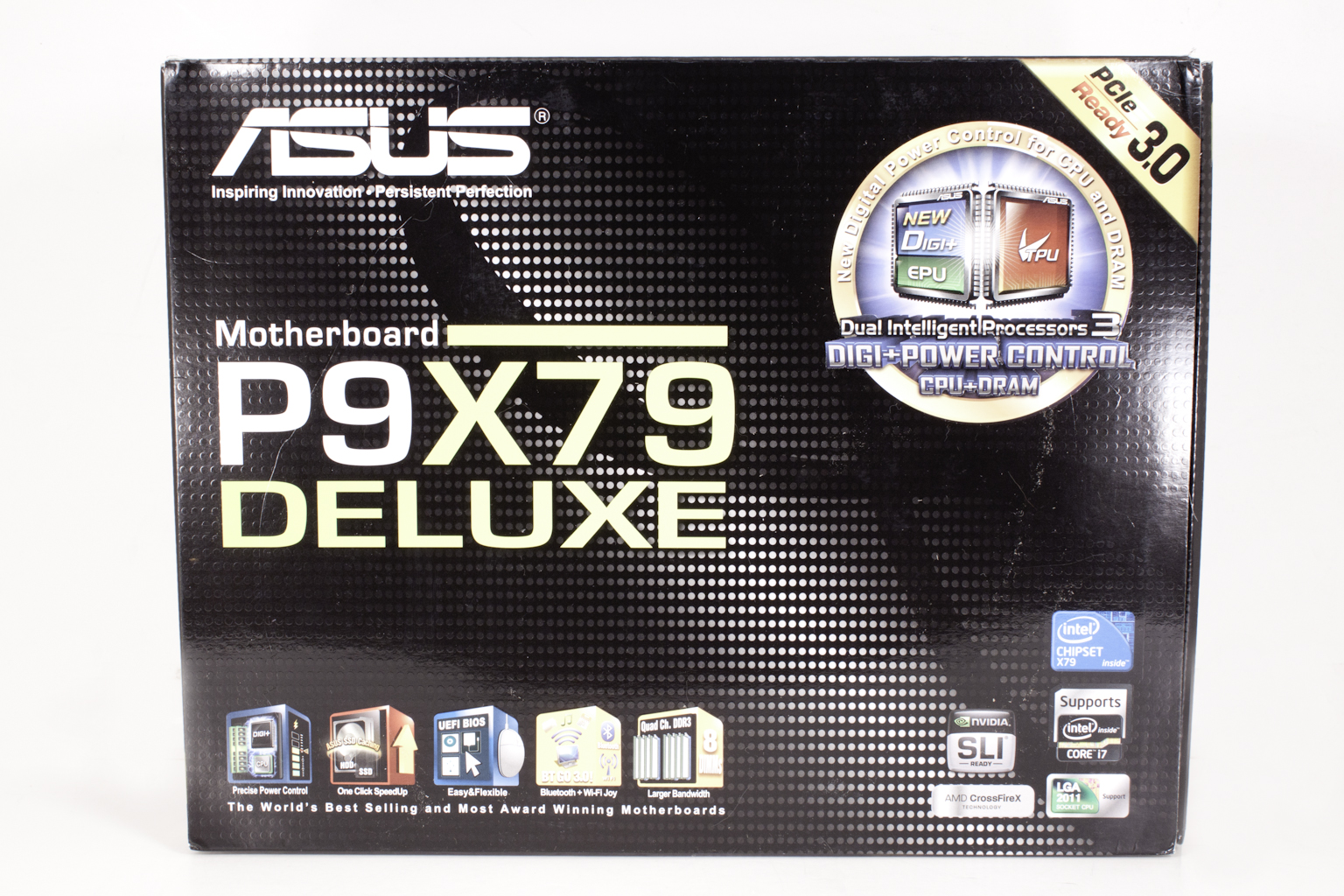 |
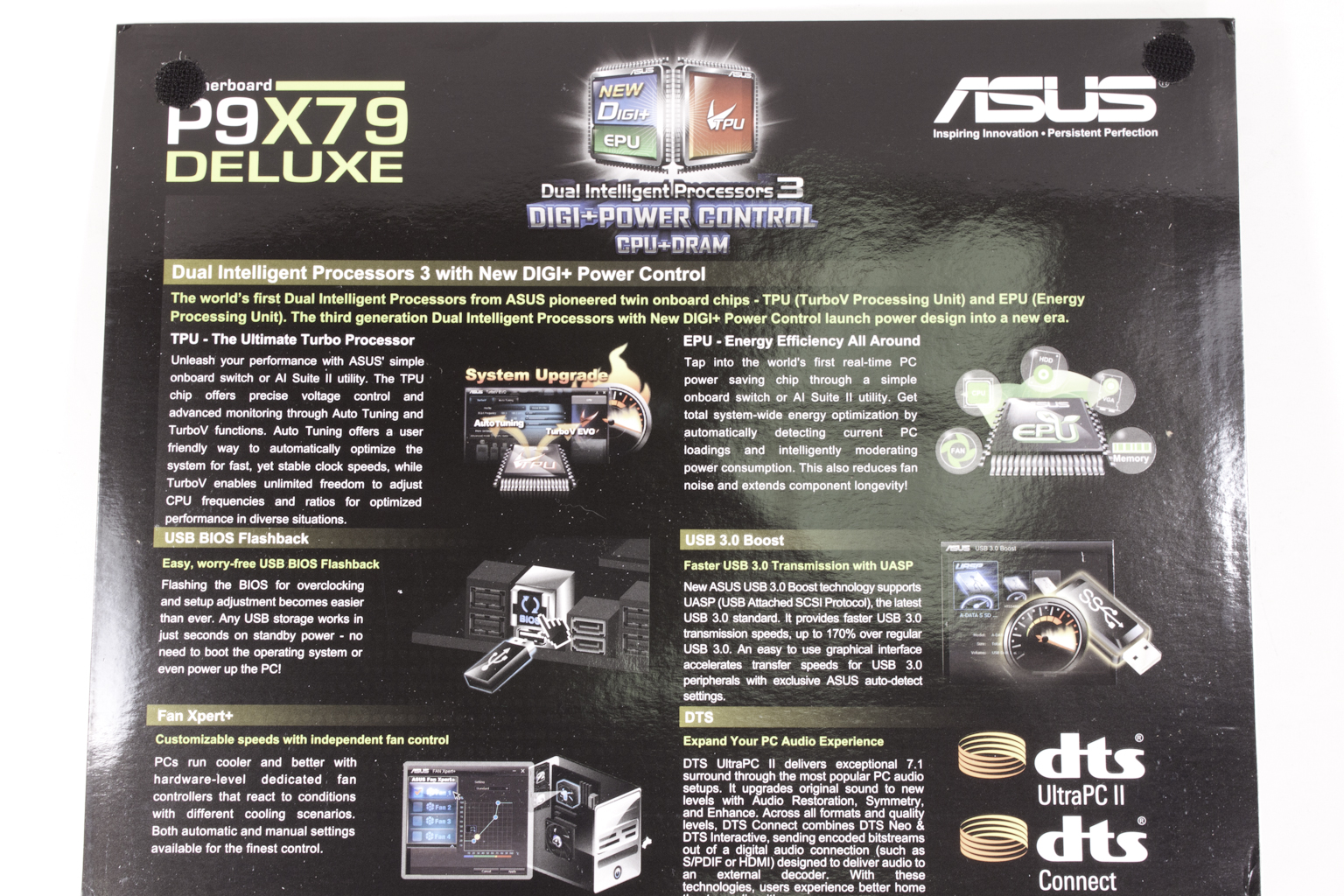 |
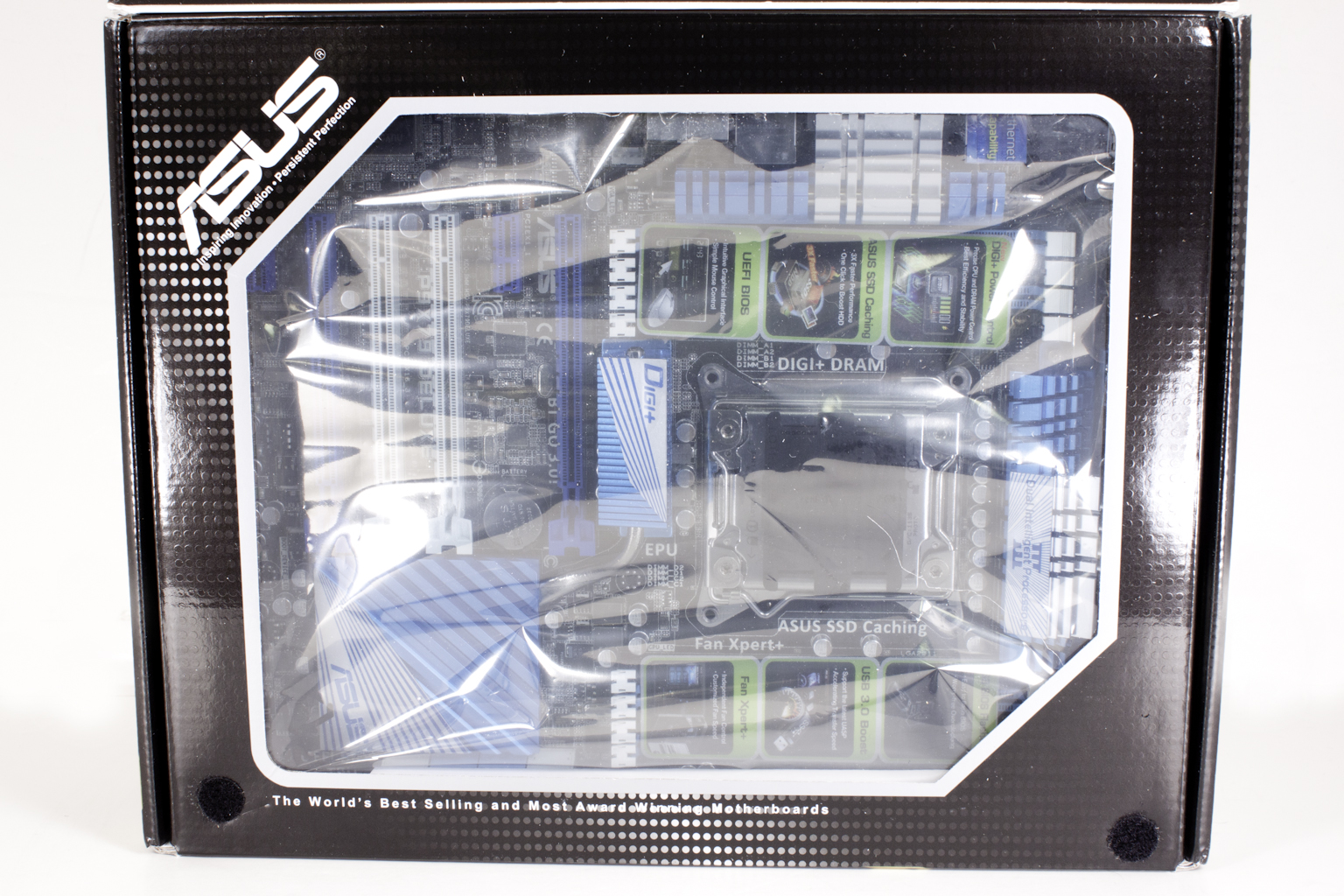 |
Unusually Asus has added a front flap (usually this is reserved for top-of-the-line products). Under this flap we find even more marketing material. This time most of it is actually of interest. Items like the USB BIOS flashback and the USB 3.0 Boost will be sure to grab the attention of anyone grabbing the box (for those that still shop in stores). The other two items (Fan Xpert+ and DTS) will add to the boards initial interest, but we will talk more about those in the features section and then again during our performance review. Another unusual thing that we found with the packaging on the P9X79 Deluxe is the view of the board under the marketing flap. Once again this is usually reserved for Asus’ (and others) top end products. Finding it in a consumer level product (even a top-end one) is a nice touch and could be an indication that Asus views the upper end of the consumer/mainstream market in the same way their do their overclocking/enthusiast market (which is a good thing).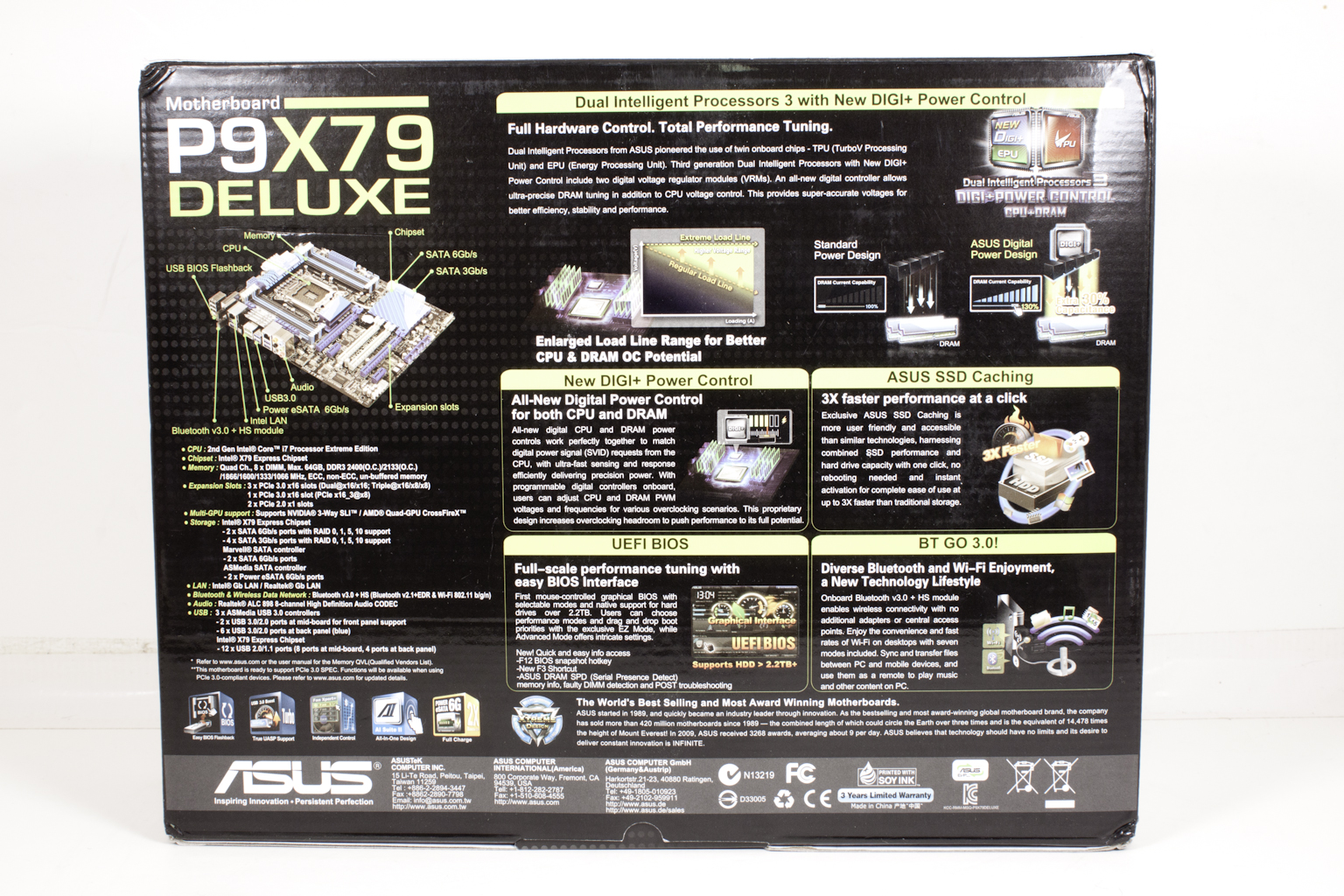
After the front the back of the P9X79 Deluxe’s box almost seems boring. You do get some additional information on the features available to the Deluxe. Again the one that stands out is the Digi+Power Control. Digi+ is not new, but Asus has been working on improving it since its introduction. We will be checking the implementation of this feature more during our performance half of the review. 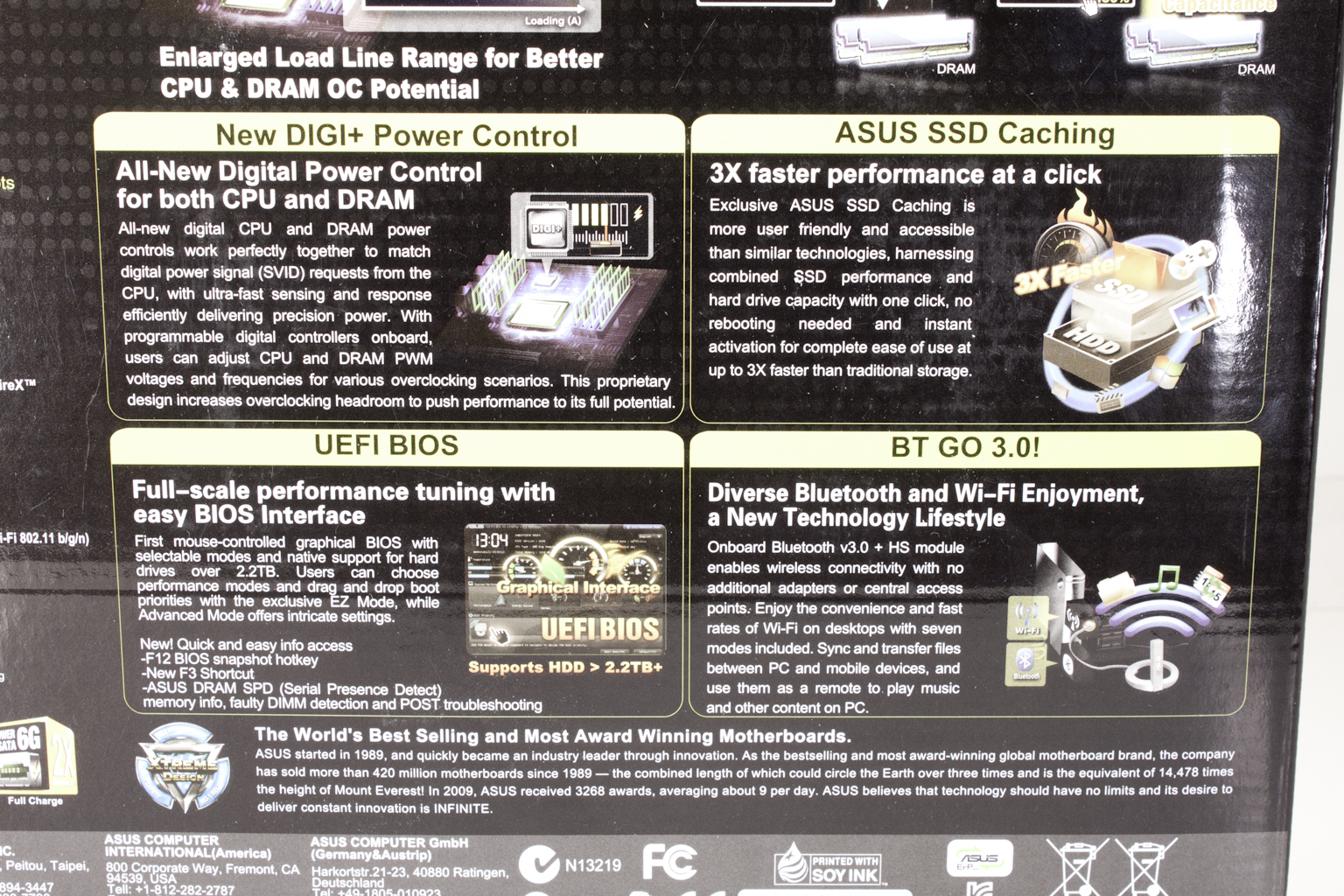
Inside the box we find a nice selection of accessories. There are standard SATA 2.0 cables and Asus’ SATA 3.0 cables right alongside a Tri-SLI bridge, manual, Driver/Utility-DVD, I/O shield and more. Buried in all of the goodies we find Asus’ BT Go 3.0 module and antenna. This little device brings some nice extras to the P9X79 Deluxe. Unlike many other boards on the market the Asus P9X79 Deluxe uses a direct pin-out style connection and not a standard PCIe x1 slot. This frees up peripheral slots and also allows you to secure this device a little better (there is even a mounting screw to hold this in place).
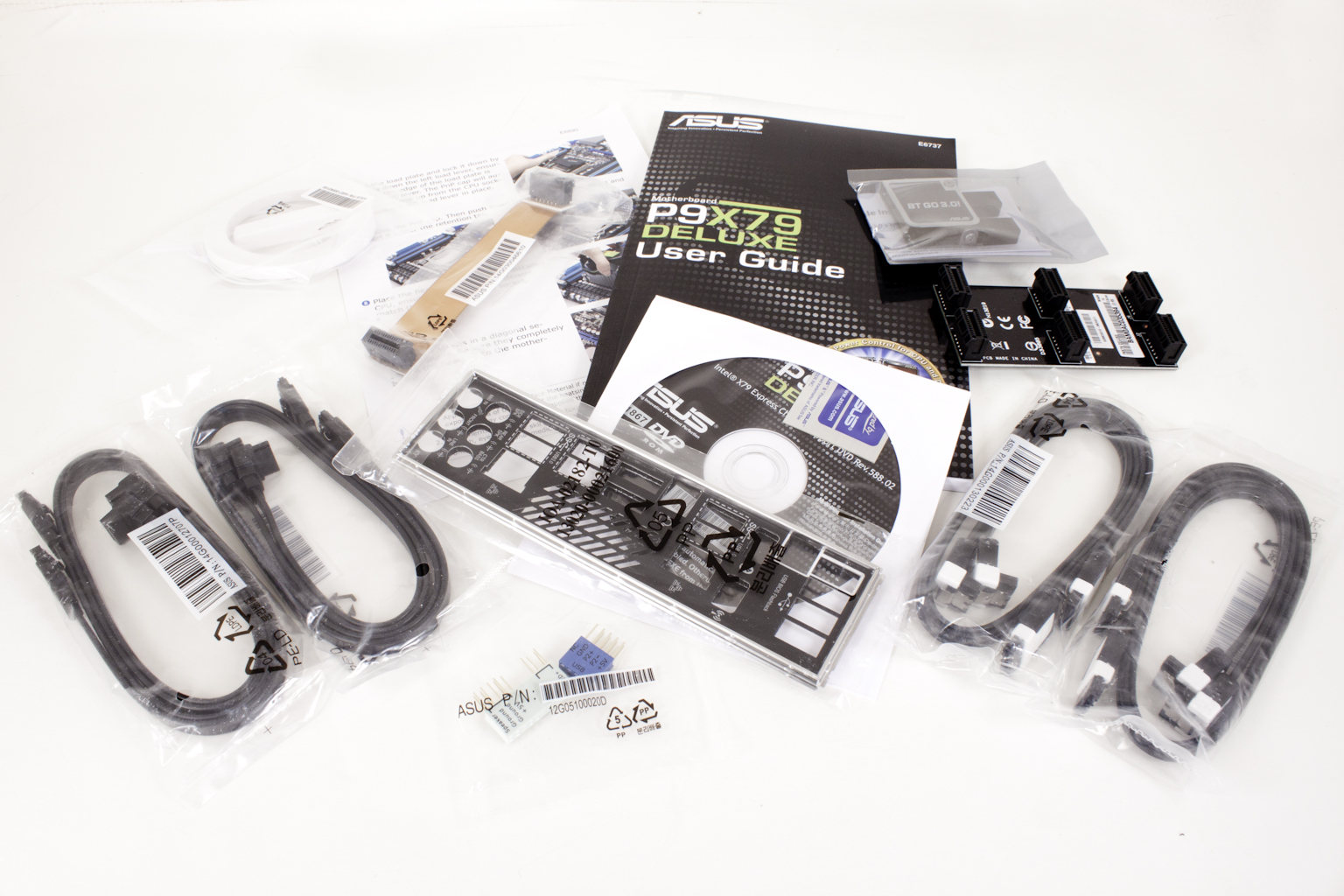 |
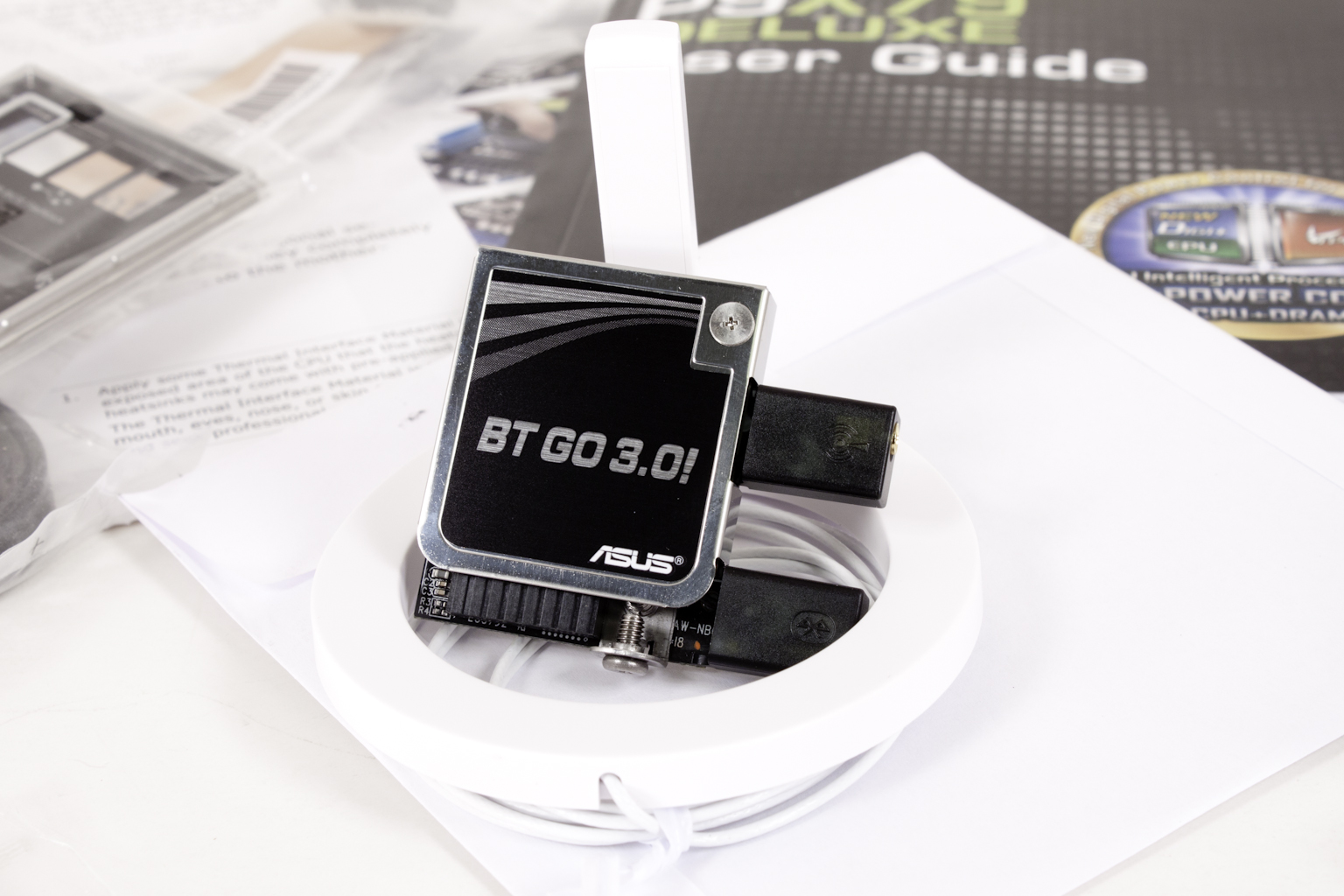 |
So far the P9X79 Deluxe is looking like a nice product; now let’s move on to the board layout and see what design choices Asus has made.
The Layout -
The layout of any motherboard is important. Even simple mistakes in component placement or the signal traces can cause major issued in performance and stability. With the ATX form factor we find that this is even truer; the devices we drop onto them demand more and cleaner power while the signal speeds push faster and faster. Asus’ P9X79 Deluxe is a standard sized ATX motherboard. It follows the new design of staggering the RAM slots on either side of the CPU socket. This design (chosen by Intel) allows for simpler traces to the RAM slots (which makes the most of available space and is also easier to tune). 
However, running two full banks of four slots does come at a cost. The board is very cramped especially with the larger LGA 2011 socket right in the center. As you can see the first bank of RAM slots is very close to the leading edge of the board. This does not leave much room for the 24-pin ATX power connector or for the MemOK! Button. Asus did manage to drop in four 4-pin fan headers and a USB 3.0 header though.
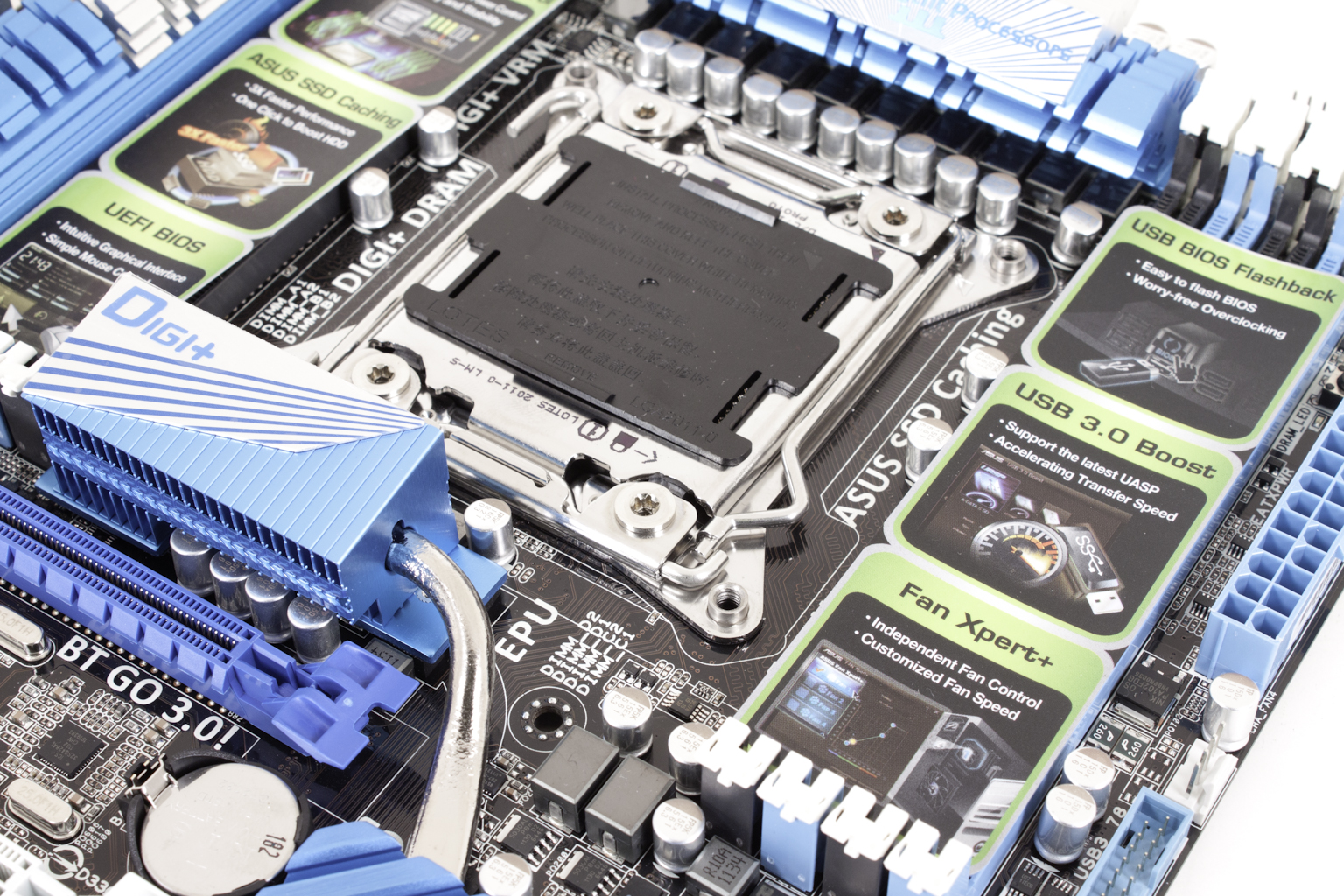 |
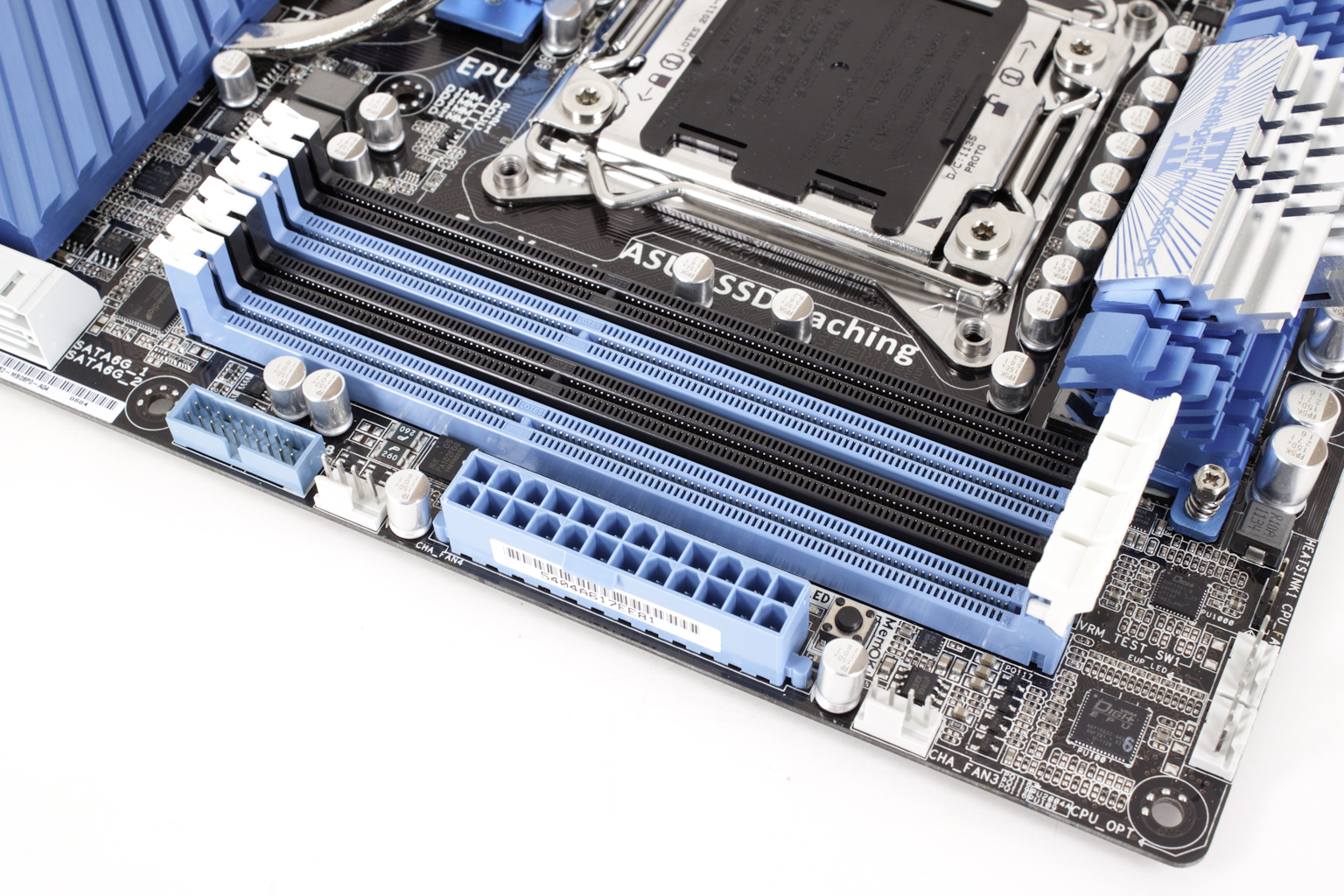 |
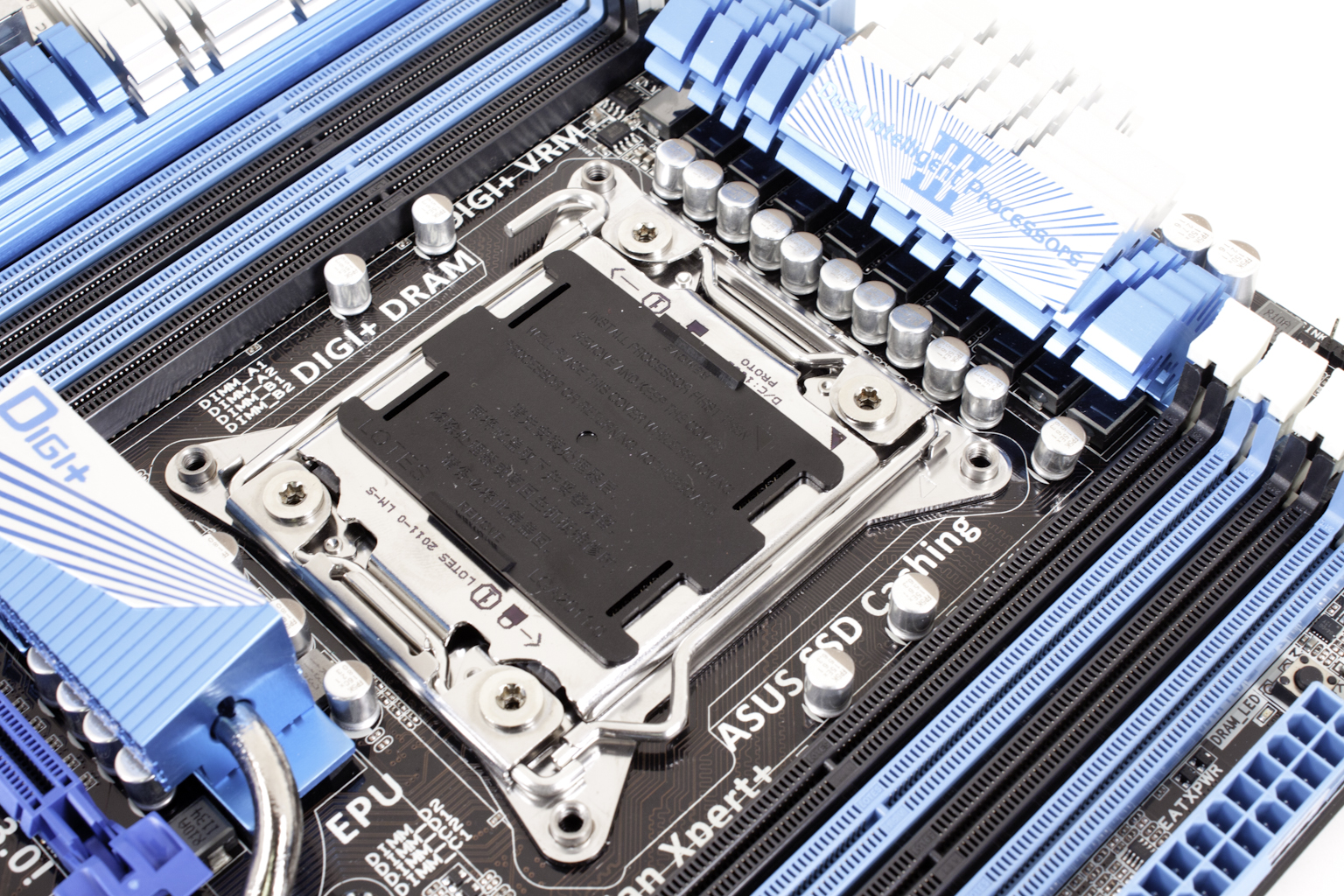 |
Moving over to the socket and the power regulation area we find one of Asus’ stylized heat sinks. This one (like ones we have seen on their enthusiast boards) has an overhang which allows it to make the most of an air cooled CPU. If you are water cooling this design is not as efficient, but it will still get the job done.
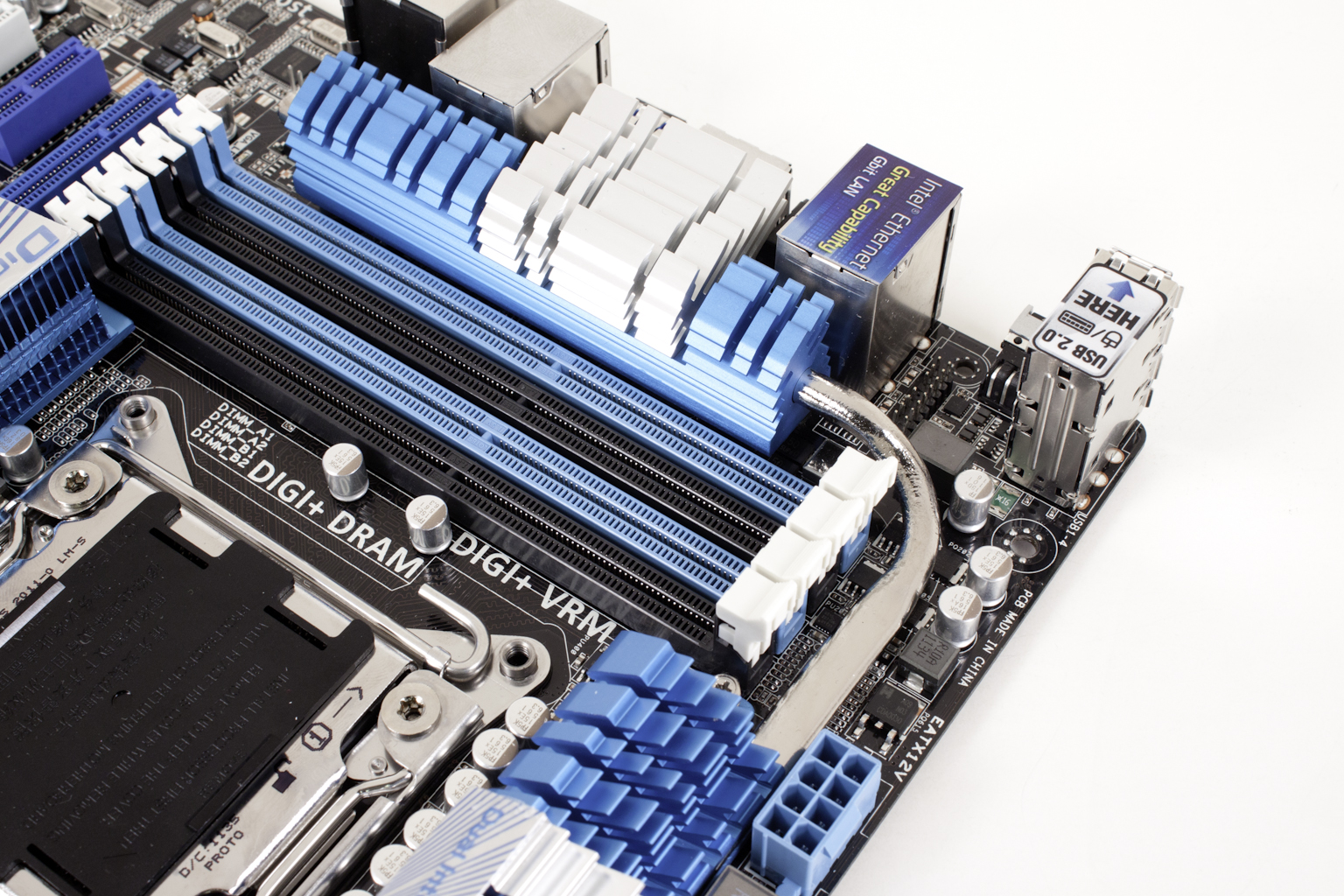 |
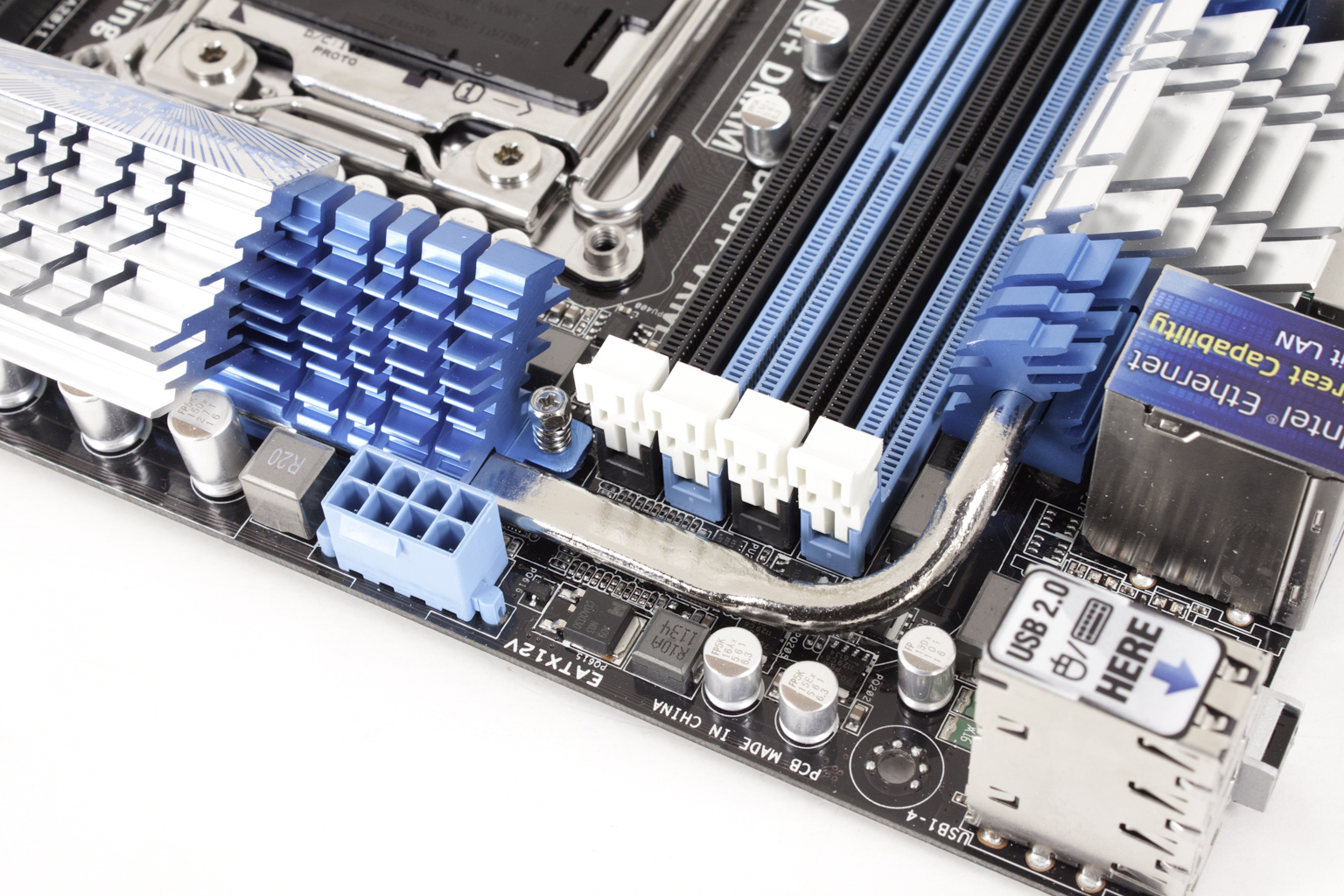 |
In the next image you can see exactly what we were talking about when we said there was a cost to be paid when using two full banks of four. There is very little room between the second RAM bank and the I/O ports. This ends up putting the heat sink right over the top of some of the I/O ports. Asus has put in vents on the I/O shield to help with this, but it could be a problem area for heat if the case you use does not have good air flow. As usual (on every board we look at) the 8-pin Aux power connector is not in the most advantageous position. Due to the ATX design (and the need to keep the traces for power short) this port is almost required to be up in this position, but it is still somewhat annoying.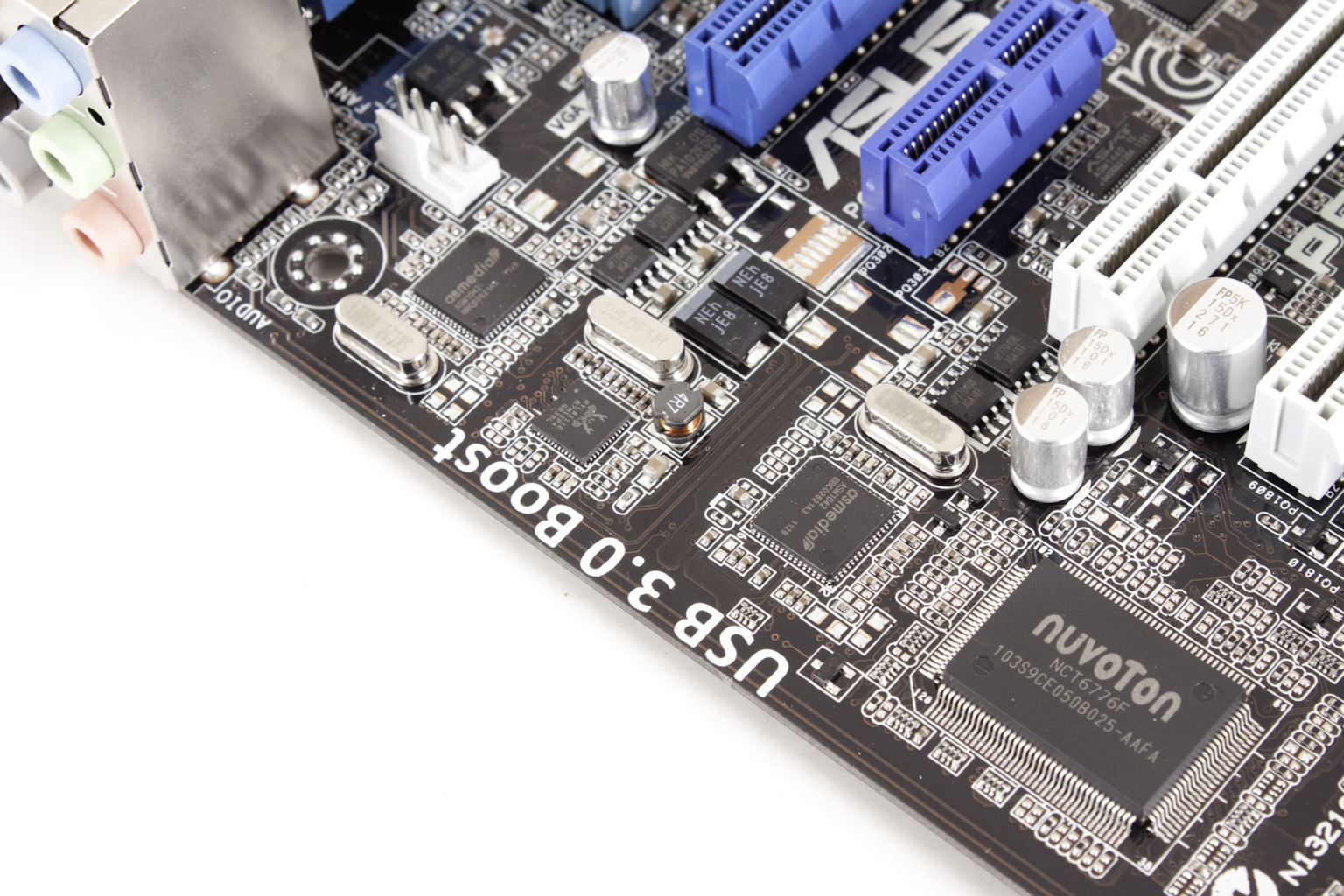
Asus (as usual) has loaded up the P9X79 Deluxe with USB 3.0 ports. These are not the typical NEC though and end up being made by asmedia, a company that only received certification for these controllers back in March of this year. This is something of a departure as the most common USB 3.0 controller is made by Renesas Electronics. However, these controllers have had more than their share of driver issues over the course of the year so we can see why Asus might be looking to change. 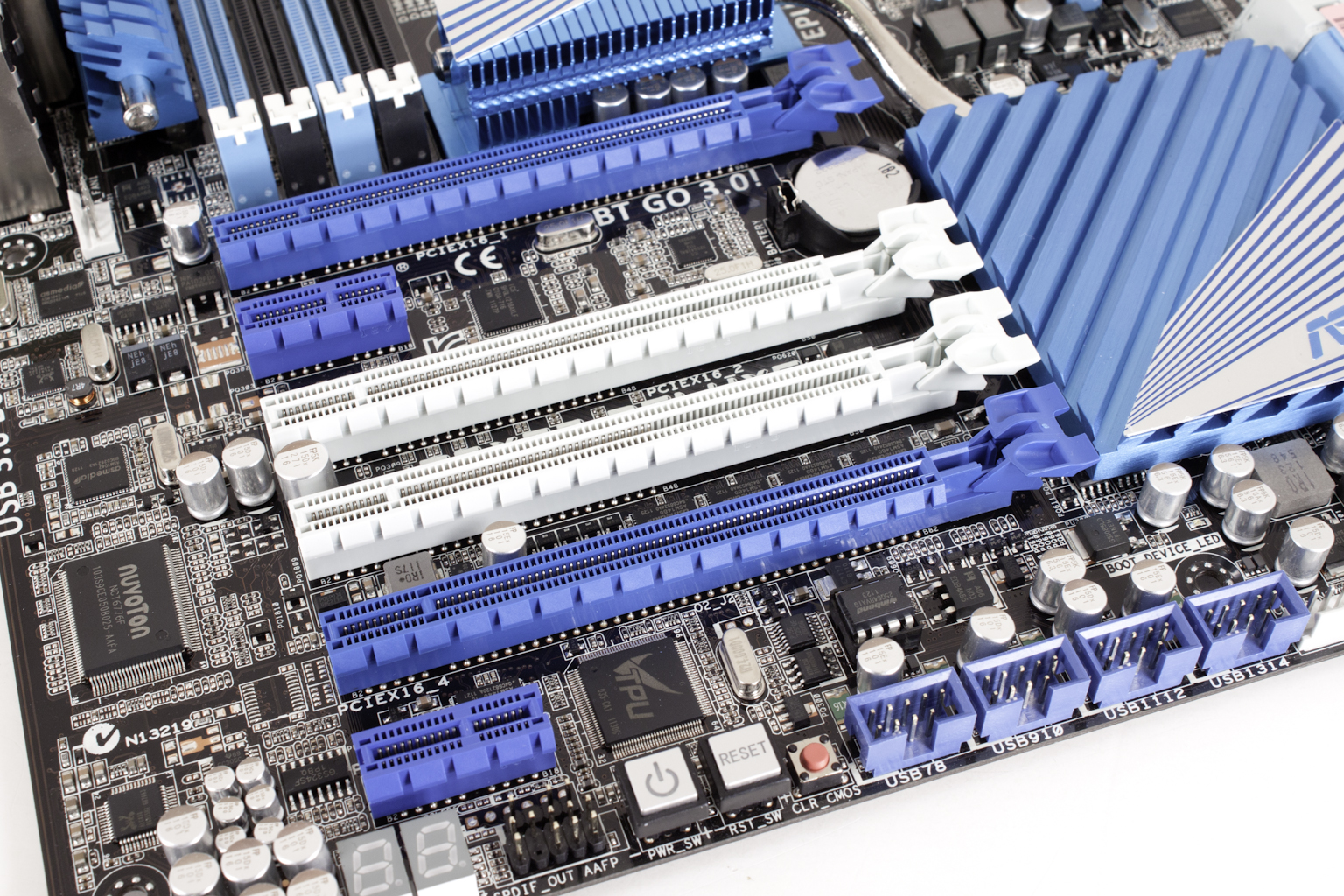
For peripheral expansion Asus has given you two four x16 mechanical slots and two x1 slots. Of the four slots only two are fully x16 electrical (slots one and four) the other two in the center are x8 electrical. You can still get Tri-SLI or three-way CrossfireX though, just one of your cards will operate at x8 and not x16. In effect all of your cards will run at x8 as both SLI and Crossfire run at the speed of the slowest GPU (sort of like RAID). Also visible in this short are a set of power/reset buttons right next to a small Clear CMOS button (much better than the traditional jumper). Directly above these is the Asus TPU chip (which we will talk more about later). Although you can control the TPU through the BIOS Asus has also put a switch on the board so that you can completely remove these from use if that is what you want.
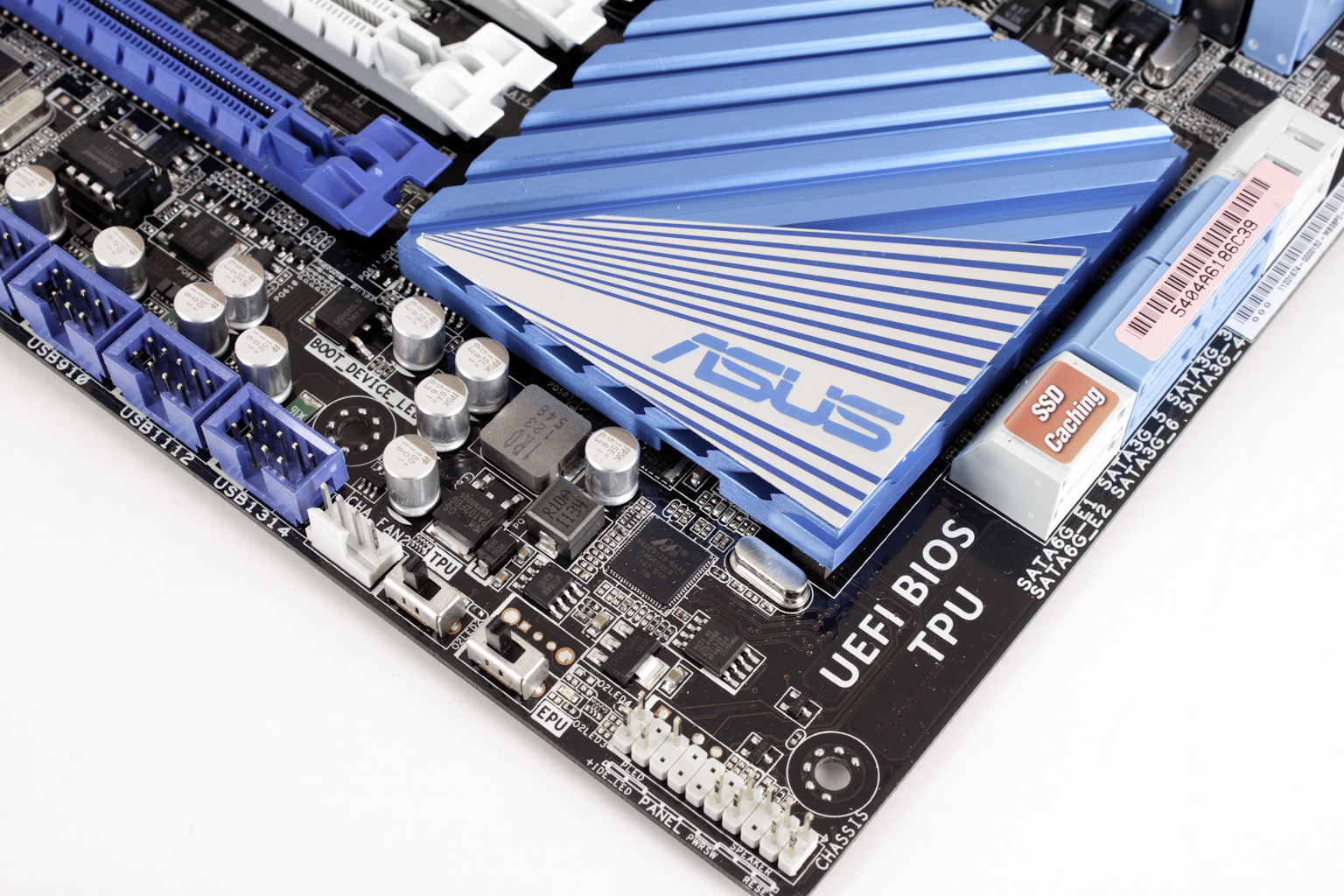 |
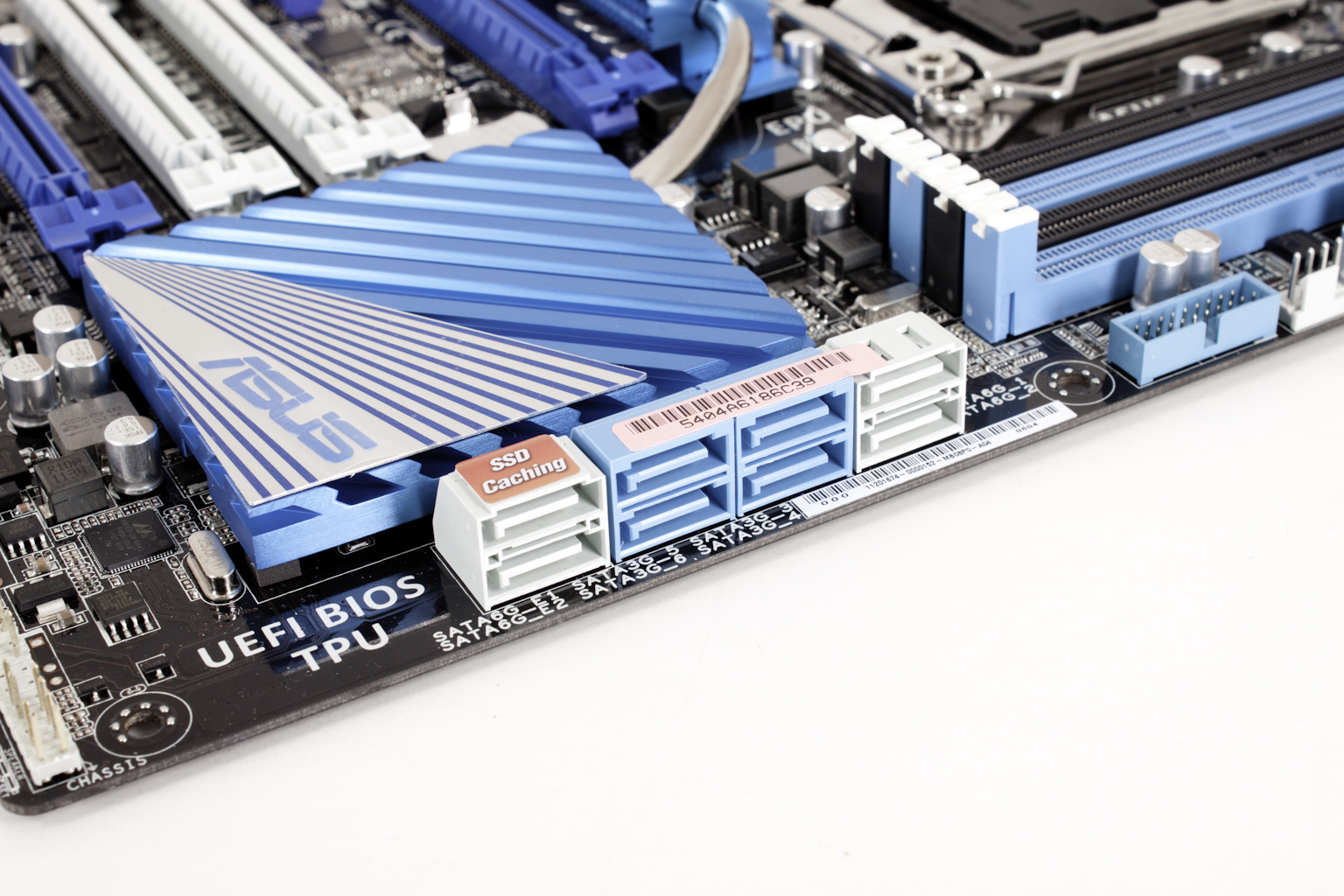 |
The SATA ports on the P9X79 Deluxe are what you would expect. You get four SATA 2.0 ports and two SATA 3.0 ports from the X79 along with two additional SATA 3.0 ports from a Marvell controller. There is a sticker on top of the two from Marvell that says SSD caching that we will be taking a deeper look into in both the features section and our performance review.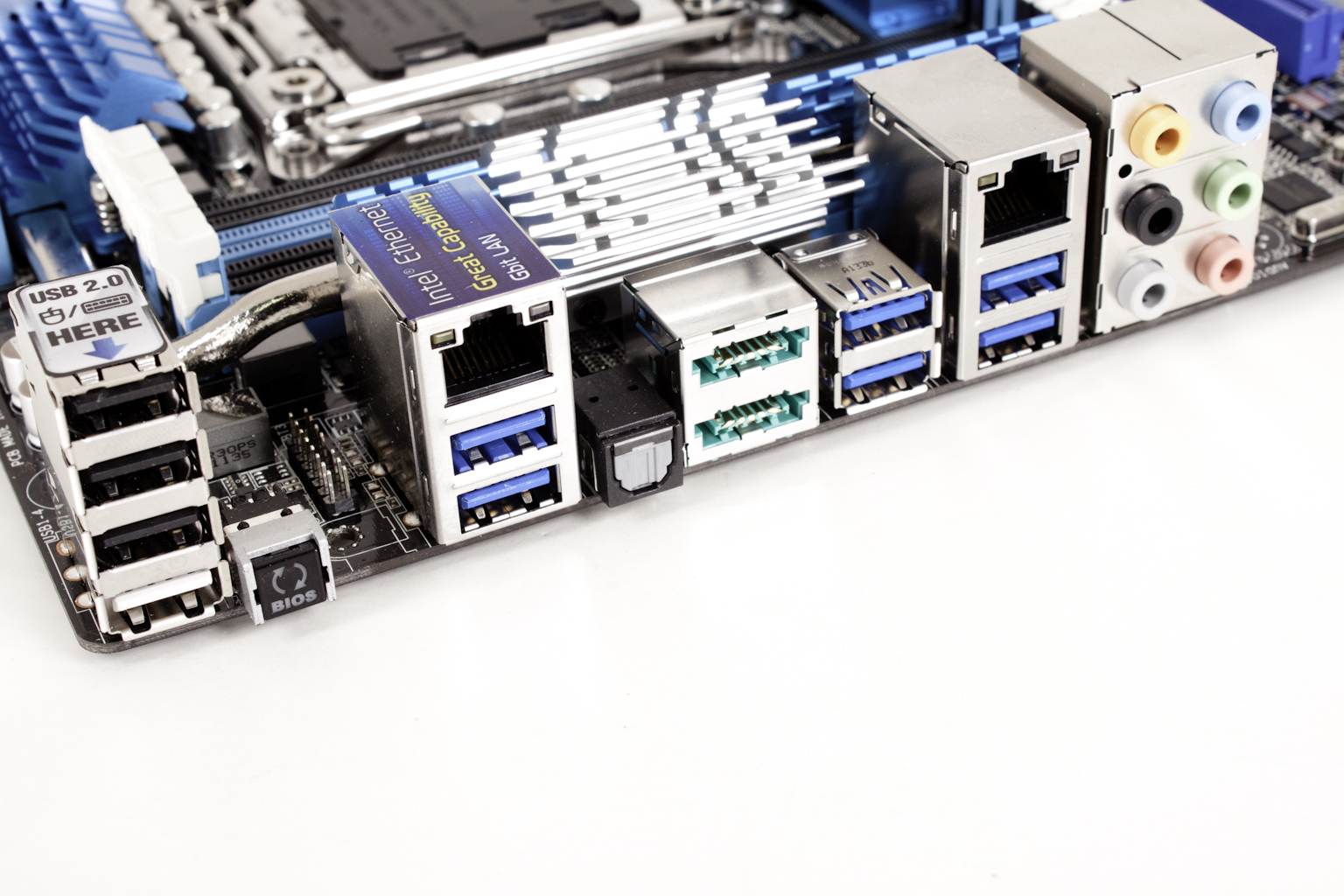
Flipping around to the I/O ports we find that Asus has put all of their USB 2.0 ports in a single stack and then labeled them as keyboard and mouse ports (just in case). Right next to this stack we find a CMOS reset button and the header for the BT GO 3.0 card. Asus also has dropped in an Intel LAN port six USB 3.0 ports two eSATA ports and the typical audio outputs.
The P9X79 Deluxe has a very interesting design (relatively); we just wonder how it will all work when you put it into play.
Features -
In the current market motherboard (and indeed almost all component) performance is very close. The days of a large performance advantage between boards using the same chipset are long gone. That is unless someone makes a HUGE mistake (like runs traces completely wrong). Now, the thing that differentiates different products is the features. These are things like power management, extra slots, better audio CODECs etc. It is these items that R&D teams work so hard to drop into what are really identical pieces of hardware at their most basic level.
Excellent -
Digi+Power
Intel LAN
Quad Channel RAM
USB BIOS Flashback
TPU/EPU
USB 3.0 Boost
SSD Caching
BT GO 3.0!
Three-Way SLI and Crossfire X
Looking at this list you can see why the P9X79 Deluxe is at the top of Asus’ consumer products. It carries quite a nice list of features and we have really only scratched the surface here. The Digi+Power has multiple benefits in addition to being able to help out if you chose to overclock the P9X79 Deluxe. The same can be said for the TPU chip while the EPU chip will help you get the longest life (and better power efficiency) from your board. Although we have not checked out SSD caching yet, this seems like a great feature especially considering the issues with the HDD market going on at the time of this writing.
In the middle (sort of good) -
Fan Xpert+
DTS Ultra PCII
DTS Connect
Here the features list gets a little slimmer, but no less interesting. The Fan Xpert+ is a continuation of Asus’ Q-Fan profiles and allows you to setup auto or custom cooling profiles to keep your P9X79 running smoothly. The two DTS (Digital Theatre Sound) features from Dolby mean that you should be able to get high quality audio from this board for both multi-media and gaming.
Floor Mats -
Q-Connector
Multiple fan headers
On-board power and reset controls
Now while these are listed as floor mats here it is only because they are items that you would expect from Asus. It is not because they are boring or not of any use it is just that they are going to be on almost any board from Asus.
There are more features that we have not covered here, but they tend to be more of your stock items when you get a motherboard these days or are basic items that you would expect to be on an Asus product. We did not cover these here as it would only be noteworthy if they were absent from the P9X79 Deluxe. Asus products are almost always loaded up with useful items and features, but not all of these will impact performance or a purchasing decision (unless it is to choose Asus over another brand).
Conclusion –
The P9X79 Deluxe looks to be a solid board from what we can tell so far. We have not dived into the performance yet, but just in looking at the component choices along with the design logic we would be very surprised to find that the P9X79 Deluxe does not perform well. We are concerned about the cooling around the voltage regulation, especially with water cooling (which we use in our testing). This is the one area that we can see having an impact on performance and in particular overclocking.
All this aside it looks like Asus is working on pushing their enthusiast level mentality into the consumer market. This is not a bad thing at all and means that consumers are getting higher quality components and boards that are designed to be pushed to get the most out of them. It also shows a commitment to Asus’ customers by continuing to bring high-quality products and not just limiting the “good stuff” to the gamers and overclockers. We are looking forward to getting the P9X79 Deluxe on the test bench and running so we can see just exactly how well it does perform.
Discuss this in our Forum
